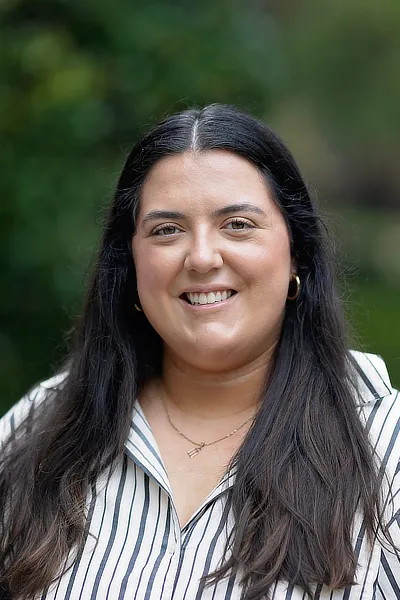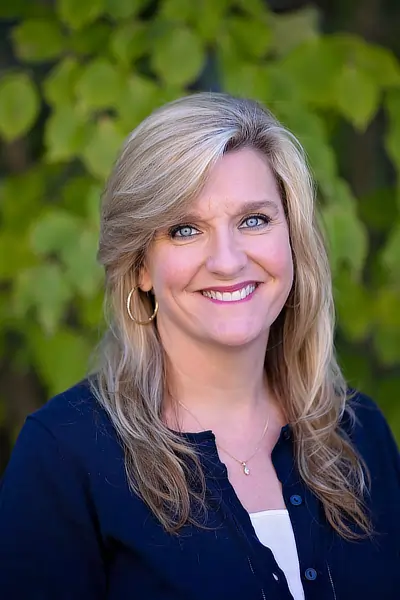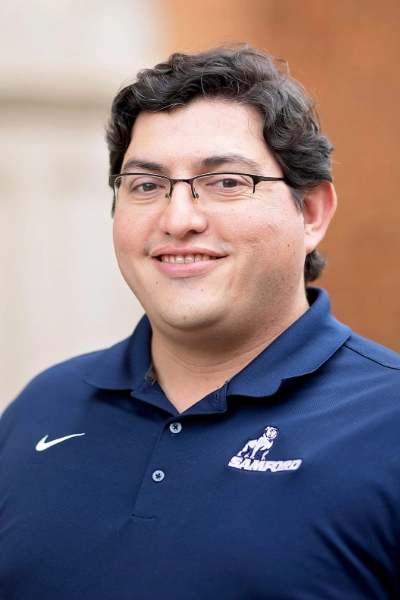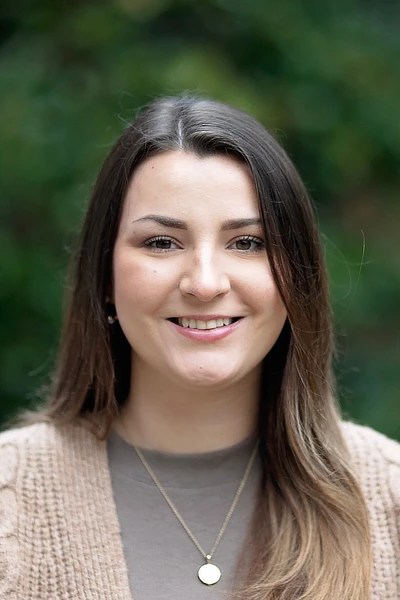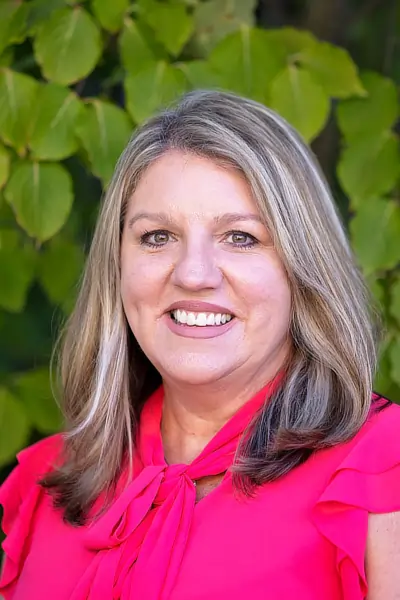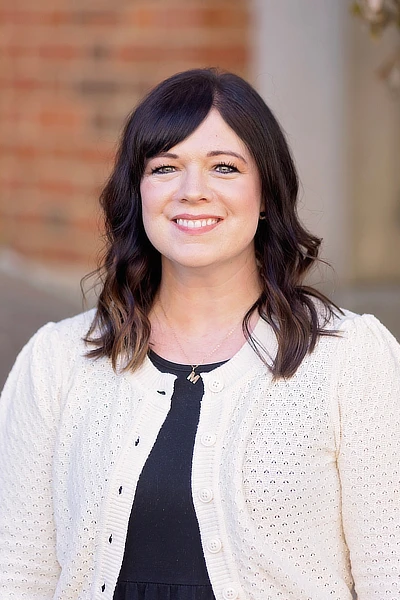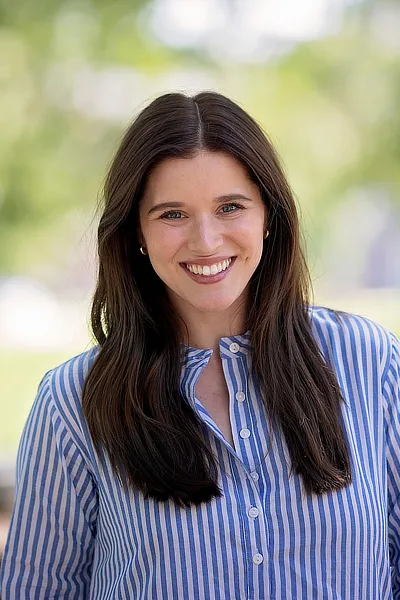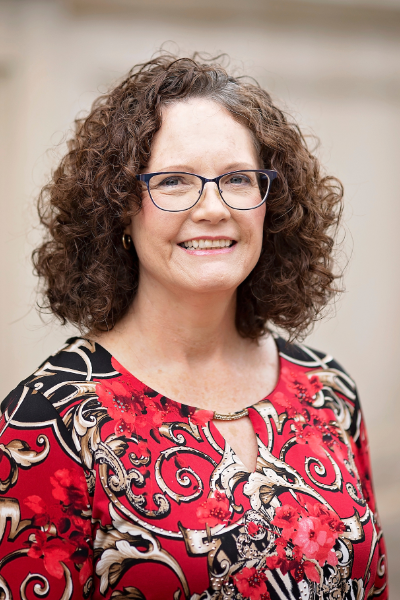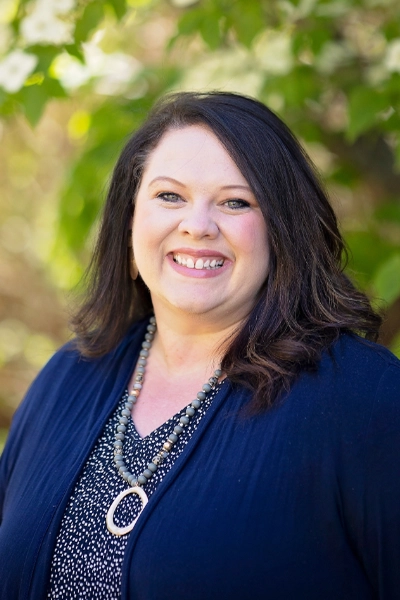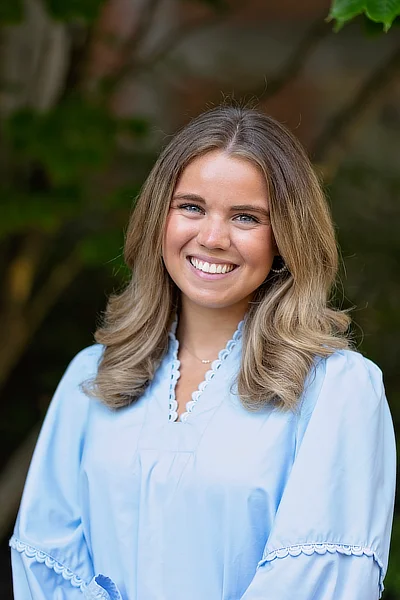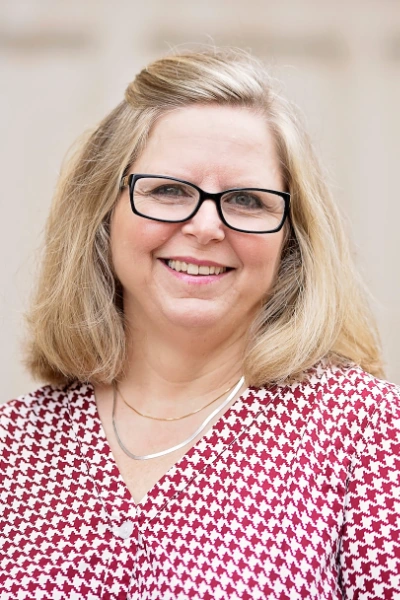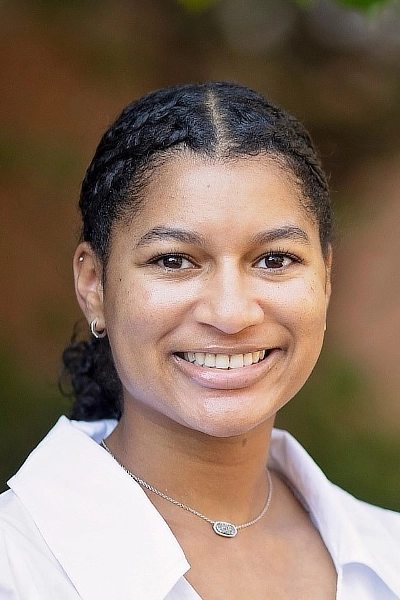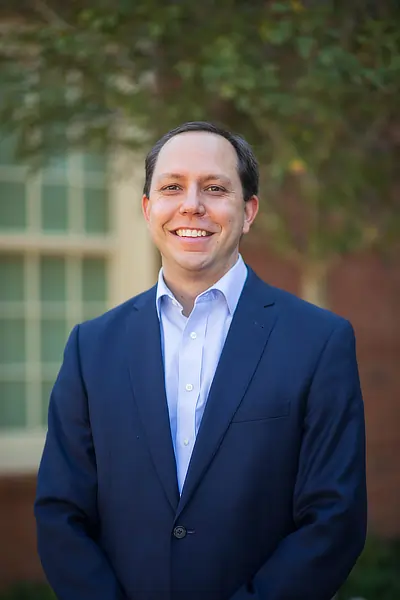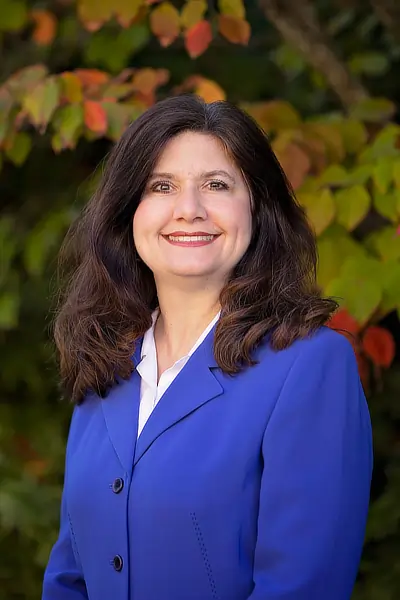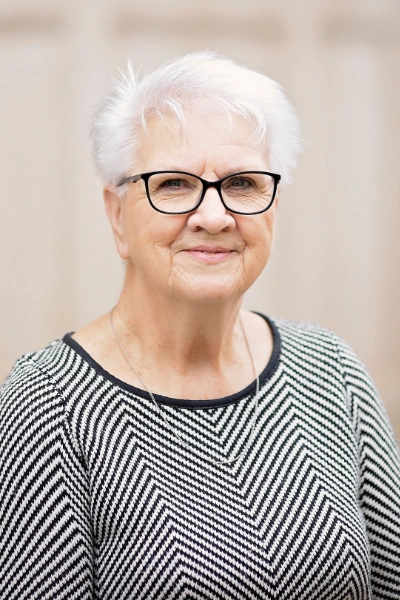We have friendly advisors on staff to serve as your contact for all aspects of your student account, including payments, charges, bills, financial aid, refunds, payment plans, and student IDs. We are located on the ground floor of Ingalls Hall, just below Admission. We are open Monday-Friday, 8 a.m.-4:30 p.m.
Samford University abides by the Statement of Ethical Principles and Code of Conduct for Financial Aid Professionals adopted by the National Association of Student Financial Aid Administrators. All Samford students, including those receiving benefits through US Veterans Affairs or the US Department of Defense are eligible for consideration to receive any Samford funded scholarships or grants, so long as application deadlines are met and awarding criteria are satisfied.
Undergraduate
Verification
- Access our school’s unique website link in the email from VGCS@inceptia.org.
- Create your account* and choose preferences for text messages/e-signatures.
- Complete your Task List.
- Confirm your signature and review your information.
- Sign your account.
2025-2026 Financial Aid Forms
Professional Judgment Forms
Scholarships & Grants
Loan Forms
Verification Forms
Other Forms
My Financial Account
In addition to Samford communicating with you through your Samford email account and in person in the office, you always have 24/7 access to your financial account, terms and conditions of award, award letter, requirements and more through mySamford. There is also a great deal of other information located in the portal including Samford email, grades, the statement system, announcements, and more. Following the information located in the student financial services portion of the portal will keep you abreast of your financial situation during your career at Samford. If you have lost your ID and/or password for accessing the portal, please contact Technology Services at 205-726-2662 or support@samford.edu.
Financial Aid Application
Students (undergraduate or graduate) are not required to file the Free Application for Federal Student Aid (FAFSA). However, we encourage students and families to submit a FAFSA every year as the starting point for securing aid. Need-based federal aid and need-based institutional aid is determined in part based on the results of your FAFSA. Samford encourages all students to submit their FAFSA by February 15 preceeding the next academic year in order to be considered for any limited need-based resources.
The FAFSA is available online each year from October 1 through June 30 two calendar years later (ex: 10/1/2018 to 6/30/2020). Please note that the first “F” in FAFSA is free. Never use a "FAFSA" website where you will be charged a fee for filing your free application for federal student aid.
Any entering freshman who wants to be considered for merit scholarships must complete his or her application for admission by December 1 preceding their first fall semester of enrollment. Students who miss this deadline will not be considered for merit scholarships. Students who miss the December 1 deadline, but apply and are admitted on or before February 15 will be considered for some non-academic–based scholarships. Some Samford scholarships will require an additional application. Prospective students should check with your admission counselor for more information.
Graduate and returning undergraduate students should contact their academic department to determine whether any applications and/or deadlines exist for obtaining institutional aid. Requirements for renewal of institutional aid may be found in the student portal, on your award letter or by contacting your financial counselor.
FAQs
Who do I contact in the Samford One Stop; who is my advisor?
Samford now provides "One Stop" service to assist with any questions or issues related to the business of being a Samford student. Please contact the Samford One Stop by visiting the ground floor of Ingalls Hall, calling 205-726-2905, or emailing OneStop@samford.edu.
Samford One Stop Team
- Meredith Haas - Advisor to undergraduate students whose last names start with A – D; graduate Pharmacy and Health Professions students and Samford Online students
- Sheri Garrett - Advisor to undergraduate students whose last names start with E – L; graduate Business and Law students
- Abby Howell - Advisor to undergraduate students whose last names start with M – R; graduate Divinity, Public Health, Social Work, and other School of Public Health students and Environmental Sciences students
- Christen Camp - Advisor to undergraduate students whose last names start with S – Z; graduate Education and Nursing students and graduate School of the Arts students
- India Rowe - Receptionist
- Kim Whatley - Administrative Assistant
- Nikki Bradbury - Director of Student Retention and the Samford One Stop
When are payments due?
Payments are typically due on the fifth day of each month. However, at the start of each new term, payment is due on the first business day after the drop/add period has ended (based on the undergraduate day calendar). Students may also review payment due dates on their statement at any time and online.
What types of payment are accepted?
Payment may be made online with e-check, Visa, American Express, Master Card, or Discover. Click here for a tutorial for making payments online. Payments made in person may be made by check. Credit card payments may not be made in person at the Samford One Stop. Payments may be mailed to: Samford University - Student Financial Services, 800 Lakeshore Drive, Birmingham, AL 35229.
How do I receive summer?
Students attending summer Term who wish to receive financial aid must have a valid FAFSA on file and complete the summer assistance form. The types of aid available will be based on the remaining annual amounts the student has not used for that aid year. The Federal PLUS and private loans do not have an annual limit, other than the cost of attendance.
How do I know if I’m a citizen or eligible noncitizen in regards to receiving federal financial aid?
If you are an eligible noncitizen, you should include your eight- or nine-digit Alien Registration Number (INS# from your certificate of citizenship) on your FAFSA. Generally, you are considered an eligible noncitizen for federal aid purposes if you are:
- a U.S. permanent resident with a permanent resident card (I-551);
- a conditional permanent resident (I-551C); or
- the holder of an Arrival-Departure Record (I-94) from the Department of Homeland Security showing any one of the following designations:
- “Refugee,” “Asylum Granted”
- “Parolee” (I-94 confirms paroled for a minimum of one year and status has not expired), or
- “Cuban-Haitian Entrant”
If you are in the U.S. on an F1 or F2 student visa, a J1 or J2 exchange visitor visa, or a G series visa (pertaining to international organizations), you are neither a citizen nor an eligible noncitizen, and are not eligible for federal student aid.
How do I notify the One Stop of my special or unusual circumstances (i.e. job loss not reported on the FAFSA, change in housing status, purchase of a computer, childcare expenses, etc.)?
You may contact your One Stop Advisor by phone (205-726-2905), email (onestop@samford.edu), or walk-in (Ingalls Hall) Monday – Friday from 8:00 a.m. – 4:30 p.m. Documentation of special or unusual circumstances may be submitted to Student Financial Services for review using the Petition for Independent Status, Cost of Attendance Adjustment Request, or Need-Based Aid Review Request, as applicable. All requests will be reviewed within 60 days of receipt. If additional documentation is needed, your One Stop Advisor will contact you via your Samford email address or by phone.
What is a tax credit, and how can it help me?
The federal government has many rules and regulations, one of which deals with tax benefits for education. Learn more to see if you qualify for the Hope Credit, Life Learning Credit, or Loan Interest.
I love reading about financial aid. Are there some other links that will explain financial aid in depth for me?
There’s always more information on the web. The following links may be of use to you, too:
How do I apply for scholarships and other aid at Samford?
Any entering freshman desiring to be considered for merit scholarships must complete his or her application for admission by December 1 preceding their first fall semester of enrollment. Students who miss the December 1 deadline, but apply and are admitted on or before February 15 will be considered for some non-academic based scholarships. Some Samford scholarships will require an additional application. Transfer students should contact their Admissions Counselor for information about merit scholarships.
Need-based aid will be determined based on the results of your Free Application for Federal Student Aid (FAFSA), if received on or before February 15 preceding the fall semester for which you are applying.
All returning undergraduate and graduate students should contact their department to determine whether any applications or deadlines exist for obtaining institutional scholarship aid.
Are there any financial aid deadlines of which I should be aware?
Prospective Students
In order to be considered for merit scholarships, an application for admission must be completed by the first scholarhip deadline of December 1 or the second scholarship deadline of February 15 preceding the first fall semester of enrollment.
All Students
Some federal student aid funds are limited, and therefore are offered on a first-come, first-served basis to qualifying students. A Free Application for Federal Student Aid (FAFSA) must be submitted by February 15 preceding the fall semester for which you are applying in order to be considered for all Federal need based programs.
In order to receive federal loans and some other types of student aid, a student must file the FAFSA and other necessary documentation before the end of the term for which they are requesting the aid. It is recommended that a FAFSA be completed at least one month before the end of the term for which the aid is desired in order to provide adequate time for processing. If a student waits too long to file a FAFSA, he or she may become ineligible for certain types of aid for that term. It is certainly better to be early than late when it comes to filing the FAFSA.
Do I have to reapply for my aid every year?
Most Samford-funded scholarships are merit-based and do not require a student to reapply each year. However, there are certain GPA and other requirements that may have to be met in order to retain this type of aid. Although students typically do not have to reapply for a renewal of merit-based institutional scholarships, you should check mySamford for award messages associated with your aid or review your award letter in the portal for renewal requirements.
Graduate and undergraduate students receiving departmental scholarships should check with their academic department chair or dean for requirements associated with aid awarded through their offices.
Need-based scholarships, however, requires the FAFSA to be resubmitted annually. The FAFSA is available on October 1 of each year and remains available through June 30 of the calendar year that is two years out. For example, the 2019-2020 FAFSA will become available on October 1, 2018 and will remain available until June 30, 2020. It is recommended that the FAFSA be filled as early as possible.
How do I know the amount of my financial aid offer?
A financial aid award packet is mailed to all prospective undergraduate students during the spring preceding their initial fall enrollment. Award notifications are also emailed to all prospective and returning students through their Samford.edu email account. Students may receive an award notice at any point in the year, based on an initial award or due to a change in the aid offer. Email is the primary form of communication for Student Financial Services. Therefore, it is important to check your Samford email account regularly. Your award notification email will contain a link to mySamford, where you can view, accept or decline your aid offer. You may access the portal at any time.
I think I have completed all requirements to receive financial aid, but nothing has posted to my account. How can I find out what is going on?
More than likely there is a requirement that has not been fulfilled. Before contacting your Samford One Stop advisor, you should log on to mySamford and review any messages or requirements listed there. This information will guide you toward reconciling the situation. For further assistance, please contact our office at onestop@samford.edu or 205-726-2905.
For how many hours must I enroll in order to receive aid?
Federal regulations state an undergraduate is considered to be a full-time student with 12 or more hours of enrollment per semester. In order to receive the full amount of aid for which you are eligible, you must be enrolled in at least 12 hours of undergraduate classes. Some aid may be disbursed for enrollment as low as six hours per semester. All Samford funded aid requires a minimum of 12 hours for disbursement.
Some federal aid may be disbursed to undergraduate students with for enrollment as low as six hours per semester. Undergraduate students who qualify for a Pell grant may retain eligibility for Pell funds only with enrollment below six hours. However, it is important to remember that in most cases, eligibility for Pell and other federal funds will be reduced with the student’s enrollment.
Enrollment status requirements vary at the graduate level. Graduate students should contact their Samford One Stop advisor for more information about enrollment requirements for their degree program.
What happens to my aid if I drop a class?
Depending on when you drop or withdraw from the class, your aid may be adjusted. Likewise, the amount of tuition and other fees may be adjusted when enrollment is reduced. One thing to keep in mind is drops will affect your ability to meet minimum standards for making Satisfactory Academic Progress.
Aid Policies
There are many policies by which the awarding and disbursement of financial aid are governed. Samford strives to abide by those policies in every transaction made for students receiving aid at the university. Below are several policies with which you should familiarize yourself.
Satisfactory Academic Progress
The ability to receive federal, state and some outside scholarship aid at Samford begins with each student making Satisfactory Academic Progress (SAP). Every student is measured against the SAP policy each May for the upcoming summer term, and the subsequent aid year. Students who do not meet the minimum SAP requirements are notified via their Samford email account of their unsatisfactory status and the steps necessary to appeal the status and retain aid eligibility.
There are three standards that must be met each May in order to qualify for federal, state and outside scholarship aid.
- First, a student cannot have attempted more than 150% of the hours necessary to earn their degree. (ex. 128 hours are needed for most undergraduate degrees. A student who has attempted 192 hours or more has failed SAP.) A student also becomes ineligible for aid if and when it becomes mathematically impossible for him to complete his program within the 150% timeframe.
- Second, a student must maintain a minimum cumulative grade point average (GPA). For undergraduate students, as well as graduate level students in law, pharmacy and divinity programs, the standard is a 2.0 cumulative GPA. For all other graduate students the standard is a 3.0 cumulative GPA. It is the policy of Samford University to not round up GPAs (ex. A 1.99 GPA is not rounded up to a 2.0). Please note Samford scholarship requirements are calculated on cumulative Samford GPAs, while SAP is calculated based on the cumulative GPA. This difference allows students to earn credits at other colleges to help get them into position for meeting SAP standards. The same cannot be said for Samford scholarships.
- Third, a student must complete 67% of the credits attempted while working on their degree. Transfer credits earned at another institution and applied for credit at Samford will be counted as well. For example, if a student has attempted a total of 60 credits while working on their degree, but only 30 of those credits were completed successfully (due to withdrawals, failures, incomplete grades, etc.), the student would have a 50% completion rate, and would therefore not be passing the 67% completion standard for SAP. If that same student had earned 50 of 60 credits, their completion rate would be 83%, and the student would be considered passing the 67% completion standard for SAP.
Students not meeting the SAP standards will be offered the opportunity to appeal the decision. A successful appeal will be based on whether or not a student’s performance was affected by personal injury or illness and/or death of an immediate family member. An immediate family member is defined as mother, father, sibling, spouse, child or grandparent. Also, a successful appeal will outline what has changed in the student’s situation that will allow for him or her to be successful, academically, in subsequent academic terms.
The SAP appeal form is available under the "Financial Aid Forms" section of this site. Complete SAP appeal forms and supporting documentation should be submitted to the Samford One Stop. Students who have their appeal approved will be notified via email. Depending on the student's situation, the approval may include an academic plan, which is intended to assist in bringing the student back into a good SAP standing.
Grade Point Averages
As discussed in the SAP section, Samford does not round grade point averages when determining eligibility for certain types of aid. Receipt of most institutional aid requires that a student have at least a 2.0 cumulative Samford GPA. Some pieces of aid require a higher standard such as a 2.5, 3.0 or even a 3.3. Please review your award messages in mySamford for specifics concerning your Samford aid.
Courses Outside Degree Program
Some courses taken outside of the student’s degree program may be accepted toward degree completion (those applied as electives, for example). However, courses taken outside of the student’s program that will not be applied toward degree completion are not eligible to be covered by financial aid. Please contact your financial aid advisor if you are considering taking courses that will not be applied to your degree program’s requirements.
Communication
All official communication will take place through one mode of communication—your Samford email address. While we will send some things to you through regular mail, we will always make sure a copy of everything we send goes through your Samford email as well. Please check your Samford email often for updates, requests and announcements concerning your financial aid at Samford.
Loan Cancellations and/or Reductions
Loans will be cancelled at the request of the borrower up to the point of disbursement. Once a Stafford, Parent PLUS or Grad PLUS loan has been disbursed, it is the responsibility of the borrower to work with the loan servicer to cancel the loan. For those wishing to cancel a loan prior to disbursement, our loan cancellation form may be found on the Forms page of this website.
Loans may be reduced before or after disbursement. Once a loan has disbursed, the borrower has up to 14 days to ask for a reduction. The loan reduction form may be found on the Forms page of this website.
Glossary of Terms
The financial aid process can be confusing and many of the terms used in this arena are not very familiar. Finaid.org provides exhaustive listings of financial aid terms. Please refer to that site for plenty of other information relative to financial aid.
Treatment of Title IV Aid in a Withdrawal
Federal financial aid funds are awarded with the expectation students will complete the entire period of enrollment. Students “earn” a percentage of the funds that are disbursed to them with each day of class attendance. When a student who has received Title IV aid from the U.S. Department of Education withdraws from the university during a semester or term, the university must determine the amount of Title IV aid the student may retain.
To calculate the amount that is to be returned, the university must establish when the student last attended class. That information/date is typically provided by the student, with the signature of approval by an academic advisor, on the withdrawal form submitted to the registrar. Samford will then utilize materials provided by the U.S. Department of Education to determine if any Title IV aid should be returned. When that date is not indicated on the form or if the student leaves the university without submitting a withdrawal form (an unofficial withdrawal), then the university will determine what date to use for the last day of attendance.
If any administrative office is made aware of a student who has unofficially withdrawn, the Office of Student Records will work with the student’s faculty to determine the last date of attendance or the last date of an academically related activity for the student and use, whichever is later. This could include: class attendance, turning in an assignment, activity in Canvas or any other class management software. If a last day of attendance or last date of an academically related activity cannot be determined, the midpoint of the term will be used. Furthermore, at the end of each term, Samford will review all students who have attempted at least one credit hour for the term but failed to earn any credits. The Office of Student Records will then contact the student’s faculty to determine the last date of an academically related activity. Once it has been determined a student has either officially or unofficially withdrawn from the university, the withdrawal process begins and will be completed within 30 days.
Samford utilizes materials provided by the U.S. Department of Education to determine if any Title IV aid should be returned. In an instance whereby aid must be returned, non-need– based student loans are returned first, followed by need-based loans, PLUS loans, then federal grants, including Pell and SEOG.
When or if any Title IV funds are required to be returned to the federal government on the student’s behalf, the student may be left owing a balance to the university. The student must pay in full the resulting balance to Samford before proceeding toward further enrollment at the university.
Verification
Verification is the process of confirming the accuracy of the data submitted on your FAFSA. It can be a complicated process, so we have provided a policies and procedures document to help answer some of the questions you may have related to verification. If you still need help with verification, you may always contact your financial aid advisor or access your student portal to gain further clarification.
Financial Policies
Drop and Add Policy for All Students
Drops, adds and other changes in a student’s class schedule that do not involve complete withdrawal from school are subject to the following rules.
- During drop/add, if a schedule change results in a reduction of the student’s total credits (less than full-time), tuition may be adjusted within 30 days. Any reduction in a student’s course load may also result in an adjustment in the student’s financial aid.
- After the last day to drop course(s) without financial penalty, dropping course(s) will not result in a reduction of charges for tuition or fees.
- There are no refunds of fees unless the course related to the fee is dropped, or one withdraws prior to the last day to drop without financial penalty. (Note: Fees associated with a service provided to the student prior to the last day to drop a course without financial penalty, such as a drug screening fee, will not be refunded, even if the student withdraws from the course associated with the fee prior to the last day to drop without financial penalty.).
Charges will be adjusted according to these financial policies and the credits taken by the student. Complete withdrawal from the university is covered under the refund and withdrawal policy. Dropping a class or withdrawing completely will more than likely have a negative impact on your ability to access federal aid for the next academic year. See Satisfactory Academic Progress policy above and check with your financial counselor before dropping a class or withdrawing.
Military Call to Active Duty
Students will be allowed to withdraw without penalty from the university and receive a 100 percent tuition remission (less any financial aid that the student may have received for the semester) upon presenting an original copy of their orders to the Registrar.
Alternatively, incomplete (INC) grades with no tuition reimbursement may be more appropriate when the withdrawal is near the end of the semester and INCs are agreed to by the instructor(s) and the student and approved by the dean of the school or college. In the latter case, the student will be allowed to complete the coursework according to a written agreement submitted to the Office of Student Records. Incomplete grades may affect your financial aid eligibility, so please notify your Samford One Stop advisor of your plans prior to your departure.
Refund Appeal
Students or parents who believe they have individual circumstances warranting an exception to published refund policies may appeal. The student or parent should contact:
University Registrar
Office of Student Records
Samford University
800 Lakeshore Drive
Birmingham, AL 35229
Return of Title IV Funds
Federal financial aid funds are awarded with the expectation that students will complete the entire period of enrollment. Students “earn” a percentage of the funds that are disbursed to them with each day of class attendance. When a student who has received federal financial aid (Title IV funds) leaves school before the end of the semester or period of enrollment, federal law requires the university to calculate the percentage and amount of “unearned financial aid funds that must be returned to the federal government.” This calculation may have the effect of requiring the student to repay funds that have already been disbursed to the student account.
The university will not reduce the amount a student has been charged simply due to of the loss of eligibility of financial aid as a result of withdrawal. Thus, withdrawal prior to completion of the semester may result in the student having to pay from personal funds the amount of financial aid required to be returned to federal sources, in addition to any institutional costs owed to the university. Students are urged to consider these financial implications prior to making the decision to withdraw from school. Please speak with your Samford One Stop advisor before finalizing your decision.
Tuition and Fees Payment Policy for All Students
Statement
Notification that a new statement has been generated will be sent to the student via the Samford University email account, which is considered the official means of communication with students, so it is important to check this account regularly. Paper billing statements will not be provided. Students and authorized users may also access the statement system at any time via the Samford University web portal.
Students registering during the early registration period will receive a statement at least 15 days prior to the payment due date. The statement reflects activity up to the date the statement was generated. Any activity transpiring after the statement generation date can be viewed on the Current Activity section of the online statement system. The Current Activity page provides the current account balance that is due including any unbilled charges and payments. To review the detail by term, select the appropriate term from the drop down box. Payment for a term statement will be due in accordance with the schedule included within this policy. Students who register/make schedule changes/add room and board, etc., after the statement generation date must consult the online system to view their account summary and make payment arrangements for all charges by the due date for the term regardless of whether or not the charge(s) have been billed.
Registration Cancellation
Students not paying their bill by the due date are subject to having their registration cancelled until payment in full is received. Student financial services will forward a clearance slip to the registrar's office to re-establish the student's class schedule.
Students making changes to their schedule (usually at the beginning of a term or during drop/add) after the statement has been sent are required to immediately make payment in full. Statements are generated monthly. Therefore, additional charges resulting from any of the changes mentioned above should be paid prior to receipt of the next statement notification in order to avoid registration cancellation. Failure to make full payment on or before the next business day after the end of the drop/add period as noted in the academic calendar for your classification, may result in registration cancellation.
Statement generation, payment and registration cancellation dates for each semester/monthly statement are noted on the payment schedule.
Holds
Students may not register for the next semester, receive transcripts, participate in commencement or receive a diploma until past due amounts are cleared. A hold will be placed on a past due account, preventing participation in one or more of the activities mentioned above.
Collections
Past due accounts assigned to a collection agency may be reported to credit bureaus. Students are responsible for attorney fees, collection fees and interest associated with accounts assigned to a collection agency. The university may also charge interest on all amounts past due.
Withdrawal Refund Policy for All Students
Student Withdrawal
The University is required to contract for a substantial amount of goods and services in advance. Most of these expenses are fixed and are not subject to change on short notice. Under certain circumstances, refunds are available to students who officially withdraw from the University. A student desiring to withdraw from the University must obtain an official withdrawal form from the Office of the Registrar. The form must be submitted to the Office of the Registrar when it is completed.
This policy applies to all terms including fall and spring semesters, fall and spring A/B terms, and summer terms. If a student withdraws from all courses in a term, a portion of or all financial aid may be returned by the university to the original provider(s) of the funding. In such cases where the return of funds creates a balance due to Samford, the student will be required to reimburse the university for those returned funds and any associated fees. (See also Elective Withdrawal in the Academic Policies and Regulations section of this catalog.)
Payment Method Options
Students may authorize parents or other designated individuals to access the statement system and make payments on their behalf. To enable this feature, a student must access the statement system and set up those individuals responsible for payment of their student account as an authorized user. Students may set up an authorized user by clicking on the link in their statement message, selecting the Authorized User tab and following the instructions.
Authorized users will receive an email notification when a new statement is issued. Click on the link in the email or enter the link in your browser to access the statement system and make a payment.
Online Payments with Check
Payment by electronic check using the statement system is free. It is also the most efficient method and Samford’s preferred method of payment. Payment by electronic check can be made by using your checking account. Money market accounts and savings accounts may not be used through the statement system.
Online Payments with Credit Card
Visa, MasterCard, Discover and American Express can be used to make online payments. A 3% (minimum of $3) convenience fee will be assessed by a third-party web processor for each transaction. There are no fees associated with electronic check payments. Reminder: Fee (3%) will not be assessed if payment is made by electronic check.
Other Payment Options
The Samford One Stop in Ingalls Hall continues to accept payment by check through the mail, but the university is not responsible for delays of the postal service. Late fees may apply if payments are received after the due date. Payment by check may be made in person. The Samford One Stop no longer accepts cash payments.
International students have two options for making payments on their student accounts.
- Payments may be made directly in the Financial Portal by utilizing TransferMate as the method of payment. Students may start by logging into mySamford and clicking on the One Stop tab and then the Financial Portal link.
- Payments may also be made by wiring funds through FlyWire. Please visit www.flywire.com to start the wire process.
The Samford University Portal and associated online student services are available 24 hours a day, seven days a week, except for scheduled maintenance and unforeseen circumstances.
Should you encounter log-in problems associated with your Samford ID and Password, please contact the Samford University Help Desk at 205-726-2662.
NOTE: While every effort has been made to provide accurate and up-to-date information, specific financial details are subject to change.
Third Party Loan Servicing
ECSI (Educational Computer Systems,Inc.), a billing service provider for Federal Perkins, CIOS, NDSL, HPSL, Cohron and other institutional loans, is under contract with Samford University to perform loan servicing for these loan programs, including collection efforts for past due borrowers.
If you have been awarded Federal Perkins, CIOS, Cohron or Health Professions loans through Samford University, you will be contacted by ECSI when your MPN has been generated and is ready to be signed. The amount of funding available for loan programs serviced by ECSI is limited. If you are not interested in accepting the funds that have been offered to you, please email Student Financial Services at onestop@samford.edu, and let them know you would like to decline the loan(s). If you have questions about Federal Direct Loans (Subsidized, Unsubsidized and PLUS), please contact your Samford One Stop advisor at onestop@samford.edu.
Loan Repayment
To find documentation regarding your student loans, contact NSLDS (The National Student Loan Data System). This is the U.S. Department of Education’s central database for federal student loans and grants. Click on the Financial Aid review link to view all your federal student aid information. You will need your FSA ID (used to sign your FAFSA) to log in to the site.
Another source for loan information is the Federal Student Aid Information Center. You can contact them at 1-800-433-3243. They are available to provide student loan information Monday through Friday from 8 a.m. to 12 midnight Eastern time. Stay on the telephone for operator assistance (do not press options 1, 2 or 3). When speaking to a representative, ask for help with borrower tracking.
If you have questions about your loan account, you can contact us via email at onestop@samford.edu or by phone.
Consumer Information
Our Team

